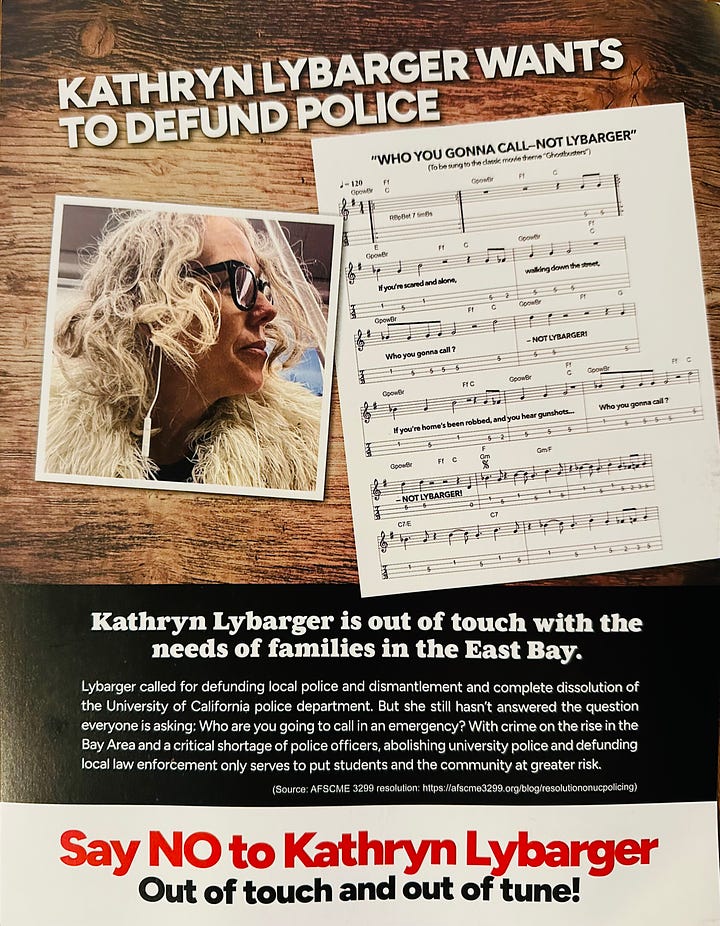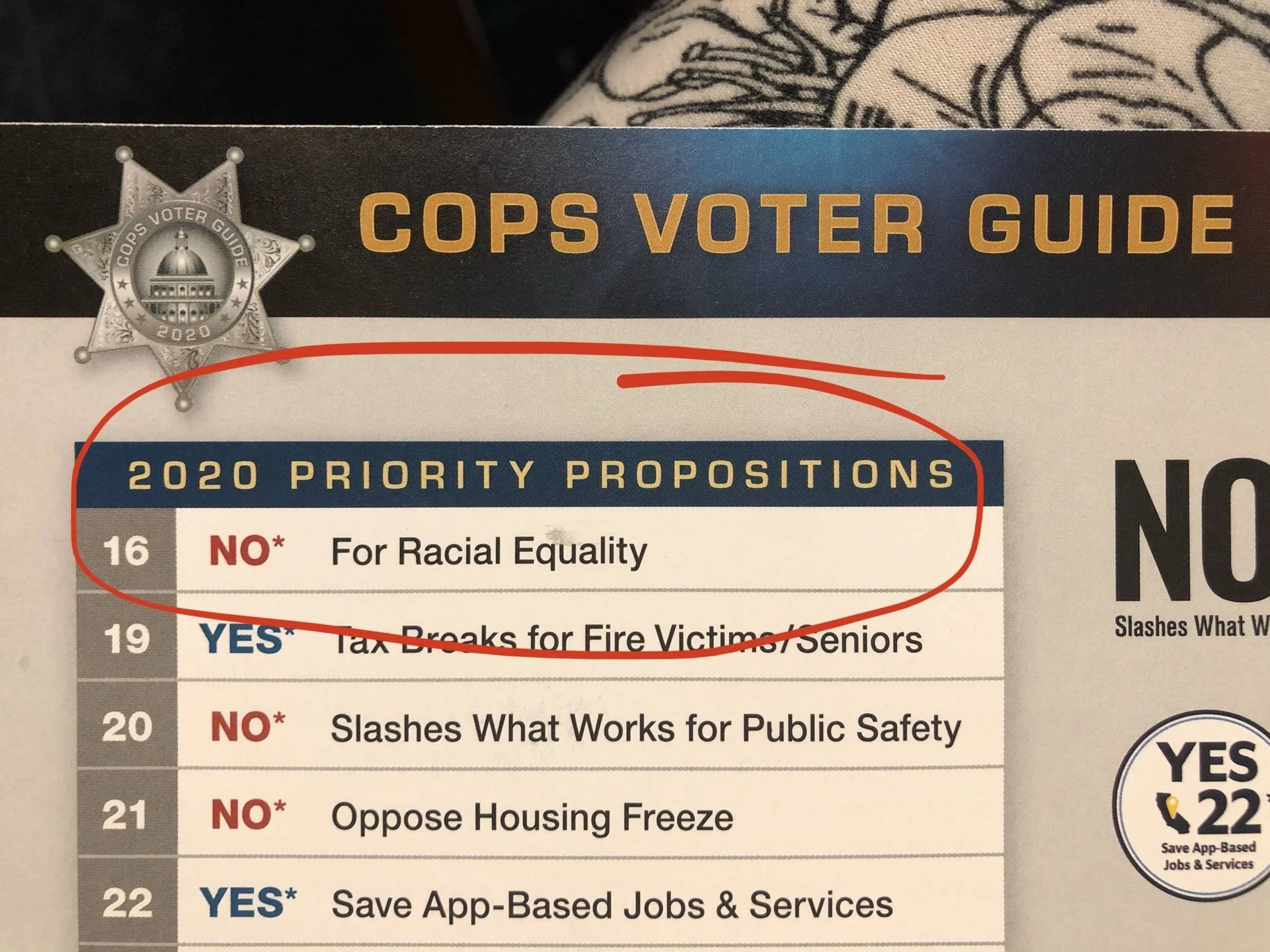Public Safety received a lot of attention during the California Primary election in March. There were several state and local competitive races this year and big spending to back them up. Voter’s mailboxes were bombarded with mailers and phones and TV screens with campaign ads.
During the Primary Election, San Francisco’s Proposition E, which would roll back police regulations on car chases and allow for increased police surveillance, raised a total of $1.6 million in support of the measure– with about $50,000 contributed by the San Francisco Police Officers Association. Meanwhile, organizers opposing the proposition raised only $200,000. On election day, 54.09% of San Francisco voters voted in favor of Proposition E and it became law.
Money talks during elections, and when it comes to our safety it’s critical that we understand who is funding the mailers and ads that claim to solve our community safety needs.
As we learned in Democracy Is For Sale, corporations and special interests spend big money in elections to fund recalls and pass ballot propositions that benefit their vested interests. The same can be said about special interest groups positioning themselves in our communities as vocal advocates for tough-on-crime legislation and leaders when in truth they are part of a well-funded campaign strategy.
It’s the community members who know what resources are needed to keep our families safe, not outside influences. Here is how to identify the money and groups behind the mailers and ads that seek to influence us on the important public safety issues that affect our communities.
Research campaign disclosures
Under California’s Political Reform Act, candidates, and political committees are required to disclose the committees that pay for mailers, ads, and other communication materials. Disclosures commonly appear as a plain text box at the bottom of the mailer or ad and are the first step in identifying who’s behind the mailers.
Wealthy donors, special interests, and corporations are known for hiding behind political action committees (PACs) while their sizable donations are used to influence our elections. However, when you do a quick search for the names of political committees, very little information about the group’s purpose is revealed.
For example, in Alameda County during the 2024 California Primary Election, a group called “JobsPAC, a Bi-Partisan Coalition of California Employers” distributed mailers depicting a Berkely Police Department station with a boarded-up front entrance and bold, red text stating Senate District 7 candidate “Kathryn Lybarger pledges to DEFUND the police.”
The mailer discloses JobsPAC and three of their top funders: McDonald’s, Uber, and the California Apartment Association. While their single-page website provides no context about who this group is or what they do, websites like transparencyusa.org allow voters to take a deeper look into the coalition’s contributors, revealing contributions from numerous gas and oil companies, and corporations such as Google, AT&T, Disney, and Target. At first, you might ask what vested interests any of these groups could have in this race. But when you consider that this candidate ran her campaign supporting fair wages and working conditions, increased labor protections, affordable housing, and environment-friendly jobs among other issues, it’s not difficult to see why these giant corporations went on the attack to protect their money-making interests in SD 7.


The Cops Voter Guide Inc. is another example of a misleading group that sends out thousands of mailers during election season. Touted as a “non-partisan, public advocacy organization,” their propaganda imitates law enforcement groups and creates a false sense of trustworthiness despite having no connection to public safety groups. In 2020, the organization sent out its voter guide mailer with misleading ballot measure descriptions, including their recommendation on Prop 16, an affirmative action measure, which stated “Vote No → for racial equality.” More shocking than their poor choice of syntax are the names of elected officials who contribute to and receive money from this organization, even after the group was scrutinized for their misleading mailers.
A look into their contributions today in 2024 reveals big names such as the Riverside Sheriffs’ Association Public Education Fund, Yes on Prop 1 – Governor Newsom’s Ballot Measure Committee, and several candidates running for judge, assembly, and senate.
Trusted resources
Election propaganda plays a big role in influencing voters on important races that affect our communities and families – and we must view them critically and do our research.
While researching your ballot, turn to trusted sources of information such as the California Secretary of State’s website, community groups and activists who share your values, and unbiased news outlets. Other resources help increase transparency and accountability in our State Capital like Courage Score, which exposes the special interests that financially support your California representatives’ campaigns, and Digital Democracy by CalMatters which tracks bills based on issue areas during the current legislative session.
Don’t let billionaires and powerful corporations lead the narrative on important issues like public safety in your community. While money may talk during election season, there are ways to discover who is behind that money and why – and nothing speaks louder than informed voters speaking truth to power.

